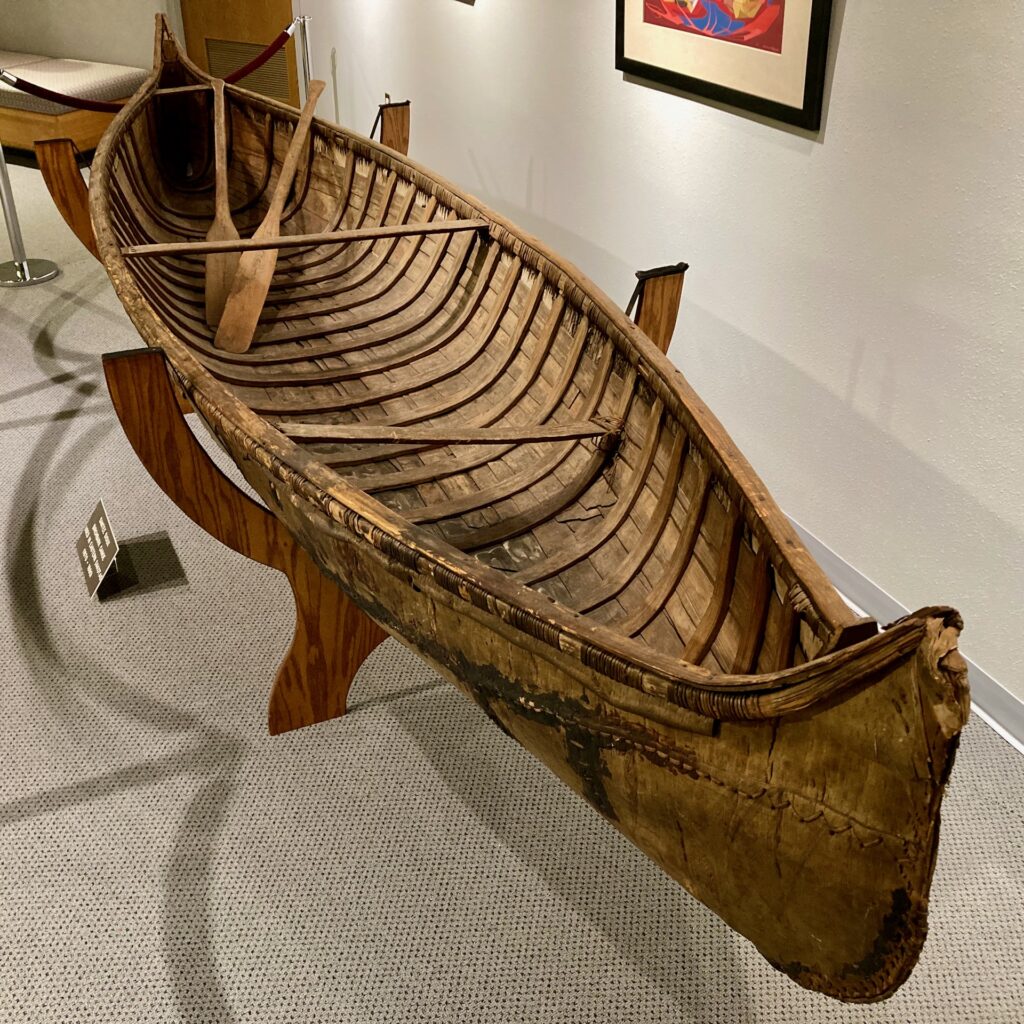We spent the day in Chamberlain so I could participate in an online workshop for General Assembly, the big annual meeting of Unitarian Universalists.
In the morning we headed to the Akta Lakota Museum, which reportedly has one of the largest collections of Lakota artifacts. The collection includes late nineteenth and early twentieth century artifacts, as well as more recent works by Lakota people.
By mistake, we first wandered into an exhibit about St. Joseph’s School, a Catholic mission school for Lakota children. The museum is actually hosted by this mission school. It was a well-intentioned exhibit, but nevertheless hard to look at. The school took in children from kindergarten through eighth grade. One display talked about how early on, in the 1920s and 1930s, school life was highly regimented; they explained this away by saying there weren’t enough nuns and priests to maintain order unless everything was highly regimented. As an educator, I wasn’t sympathetic; I felt they were trying to justify regimentation when actually their educational model was essentially flawed.
Then another nearby display told how it was against the rules for children to speak Lakota, and that speaking Lakota was considered a major discipline problem. This makes me think the problems with maintaining order had as much to do with harsh and ill-considered rules as it did with staffing shortages. While I can sympathize with the positive intent of the school — to provide educational opportunities for Lakota children — the educational philosophy, educational methods, and school organization seem to me to be fatally flawed.
In fact, I got so angry at this poorly conceived educational venture, I left before I went through the whole exhibit. So I don’t know if the exhibit addressed the child sexual abuse scandal at St. Joseph’s School (read about this scandal here, and here). In any case, I didn’t think the exhibit adequately addressed the stories of people like Zigmund Hollow Horn who at age 65 recalled, “If you spoke your language [i.e., Lakota], they held you down, put a bar of soap in your mouth.” I don’t see how that kind of poor behavior by adults can be justified under any legitimate educational model.
The main exhibit was less self-serving. There were some fine examples of Lakota material culture on display. However, the exhibit as a whole looked like something out of the 1970s — artifacts placed together in cases without a clear organizing principle, meager labels, not enough supplementary cultural information. I also felt that some of the artifacts needed conservation, and were displayed in such a manner as to exacerbate existing conservation problems. Take, for example, the birch bark canoe that’s on display. The forward thwart has detached from the gunwale, allowing the hull to splay out. I felt this serious conservation problem may have been exacerbated by a poorly designed display cradle which tends to push the bottom of the boat up thus aggravating the tendency for the gunwales to splay.

I understand that the primary mission of St. Joseph’s School is education, and they may find it hard to justify paying to conserve the artifacts in their museum. But if that’s the case, then admit that adequately maintaining the museum is outside the scope of the institution’s mission, and give the artifacts to someone who can adequately conserve them.
It wasn’t long before I had had enough of the main exhibit, and walked out. I felt an excellent collection of artifacts had been ruined by outdated exhibit design and lack of adequate conservation. I couldn’t help but wonder what the museum would look like if it were adequately funded — and if the exhibit had been designed by Lakota curators rather than by well-meaning white school officials.
After leaving the museum, we ate lunch. I spent the afternoon preparing for, then helping lead the online workshop at General Assembly. So about half the day was really a work day.
In the evening, we walked around Chamberlain, a lovely small town with a population of about 2,200 people. It was a perfect summer day: in the seventies, windy, clear. We looked out over the river at the green bluffs rising up on the opposite shore. We both agreed this would be a pleasant place to live. As the sun set over the western bank of the Missouri, we walked back to the motel to get ready for bed.

